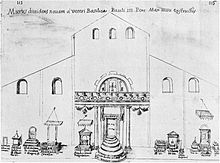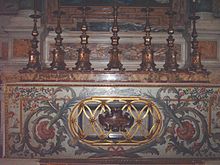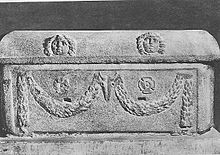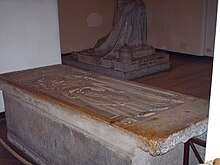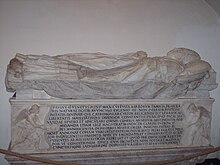
Pope Gregory III was the bishop of Rome from 11 February 731 to his death. His pontificate, like that of his predecessor, was disturbed by Byzantine iconoclasm and the advance of the Lombards, in which he invoked the intervention of Charles Martel, although ultimately in vain. He was the last Pope to seek the consent of the Byzantine exarch of Ravenna for his election, and the last non-European pope until the election of Pope Francis on 13 March 2013, more than 1,271 years later.
Pope Theodore II was the bishop of Rome and ruler of the Papal States for twenty days in December 897. His short reign occurred during a period of partisan strife in the Catholic Church, which was entangled with a period of violence and disorder in central Italy. His main act as pope was to annul the recent Cadaver Synod, therefore reinstating the acts and ordinations of Pope Formosus, which had themselves been annulled by Pope Stephen VI. He also had the body of Formosus recovered from the river Tiber and reburied with honour. He died in office in late December 897.
Pope Leo II was the bishop of Rome from 17 August 682 to his death. He is one of the popes of the Byzantine Papacy. Described by a contemporary biographer as both just and learned, he is commemorated as a saint in the Roman Martyrology on 28 June.
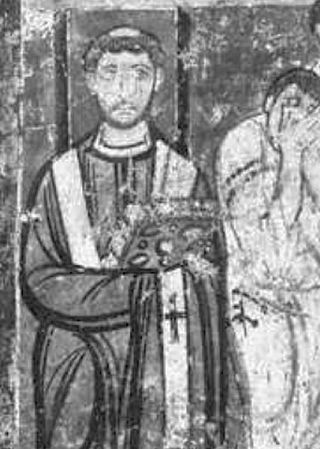
Pope Leo IV was the bishop of Rome and ruler of the Papal States from 10 April 847 to his death. He is remembered for repairing Roman churches that had been damaged during the Arab raid against Rome, and for building the Leonine Wall around Vatican Hill to protect the city. Pope Leo organized a league of Italian cities who fought and won the sea Battle of Ostia against the Saracens.

The Papal Basilica of Saint Peter in the Vatican, or simply Saint Peter's Basilica, is a church built in the Renaissance style located in Vatican City, the papal enclave that is within the city of Rome, Italy. It was initially planned by Pope Nicholas V and then Pope Julius II to replace the aging Old St. Peter's Basilica, which was built in the fourth century by Roman emperor Constantine the Great. Construction of the present basilica began on 18 April 1506 and was completed on 18 November 1626.
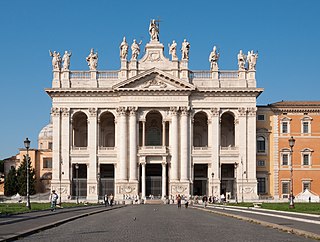
The Archbasilica Cathedral of the Most Holy Savior and of Saints John the Baptist and John the Evangelist in the Lateran, also known as the Papal Archbasilica of Saint John [in] Lateran, Saint John Lateran, or the Lateran Basilica, is a Catholic cathedral church of the Diocese of Rome in the city of Rome, and serves as the seat of the bishop of Rome, the pope. The archbasilica lies outside of Vatican City proper, which is located approximately 4 kilometres (2.5 mi) to the northwest. Nevertheless, as properties of the Holy See, the archbasilica and its adjoining edifices enjoy an extraterritorial status from Italy, pursuant to the terms of the Lateran Treaty of 1929.

The Papal Basilica of Saint Paul Outside the Walls, commonly known as Saint Paul's Outside the Walls, is one of Rome's four major papal basilicas, along with the basilicas of Saint John in the Lateran, Saint Peter's, and Saint Mary Major, as well as one of the Seven Pilgrim Churches of Rome.
Pope John V was the bishop of Rome from 23 July 685 to his death. He was the first pope of the Byzantine Papacy consecrated without prior imperial consent, and the first in a line of ten consecutive popes of Eastern origin. His papacy was marked by reconciliation between the city of Rome and the Empire.
Vatican Hill is a hill located across the Tiber river from the traditional seven hills of Rome, that also gave the name of Vatican City. It is the location of St. Peter's Basilica.
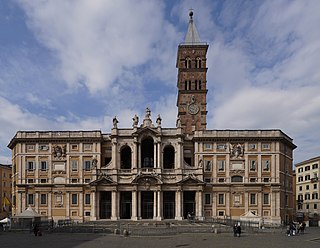
The Basilica of Saint Mary Major, or church of Santa Maria Maggiore, is a Major papal basilica as well as one of the Seven Pilgrim Churches of Rome and the largest Catholic Marian church in Rome, Italy.

The Basilica Papale di San Lorenzo fuori le mura is a Roman Catholic papal minor basilica and parish church, located in Rome, Italy. The Basilica is one of the Seven Pilgrim Churches of Rome and one of the five "papal basilicas", each of which was assigned to the care of a Latin Church patriarchate. The Basilica was assigned to the Patriarchate of Jerusalem. The Basilica is the shrine of the tomb of its namesake, Saint Lawrence, one of the first seven deacons of Rome who was martyred in 258. Many other saints and Bl. Pope Pius IX are also buried at the Basilica, which is the centre of a large and ancient burial complex.

Saint Peter's tomb is a site under St. Peter's Basilica that includes several graves and a structure said by Vatican authorities to have been built to memorialize the location of Saint Peter's grave. St. Peter's tomb is alleged near the west end of a complex of mausoleums, the Vatican Necropolis, that date between about AD 130 and AD 300. The complex was partially torn down and filled with earth to provide a foundation for the building of the first St. Peter's Basilica during the reign of Constantine I in about AD 330. Though many bones have been found at the site of the 2nd-century shrine, as the result of two campaigns of archaeological excavation, Pope Pius XII stated in December 1950 that none could be confirmed to be Saint Peter's with absolute certainty. Following the discovery of bones that had been transferred from a second tomb under the monument, on June 26, 1968, Pope Paul VI said that the relics of Saint Peter had been identified in a manner considered convincing. Only circumstantial evidence was provided to support the claim.

Papal inauguration is a liturgical service of the Catholic Church within Mass celebrated in the Roman Rite but with elements of Byzantine Rite for the ecclesiastical investiture of a pope. Since the inauguration of Pope John Paul I, it has not included the 820-year-old (1143–1963) papal coronation ceremony.

Old St. Peter's Basilica was the building that stood, from the 4th to 16th centuries, where the new St. Peter's Basilica stands today in Vatican City. Construction of the basilica, built over the historical site of the Circus of Nero, began during the reign of Emperor Constantine I. The name "old St. Peter's Basilica" has been used since the construction of the current basilica to distinguish the two buildings.
The Catacomb of Calepodius is one of the Catacombs of Rome, notable for containing the tombs of Pope Callixtus I and Pope Julius I, along with the eponymous Calepodius.
Giacomo Grimaldi was an Italian historian and Vatican archivist, who lived in the early 17th century.

In the Catholic Church, a basilica is a designation given by the Pope to a church building. Basilicas are distinguished for ceremonial purposes from other churches. The building need not be a basilica in the architectural sense. Basilicas are either major basilicas – of which there are four, all in the Diocese of Rome – or minor basilicas, of which there were 1,810 worldwide as of 2019.
